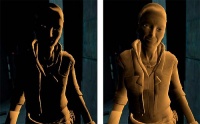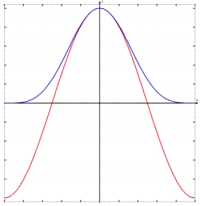Half Lambert: Difference between revisions
No edit summary |
TomEdwards (talk | contribs) (uncat) |
||
| Line 13: | Line 13: | ||
* [[$halflambert]] - [[VMT]] shader paramter to enable Half Lambert lighting. | * [[$halflambert]] - [[VMT]] shader paramter to enable Half Lambert lighting. | ||
[[Category:Material System]] | [[Category:Material System]] | ||
[[Category:Technical]] | |||
Revision as of 11:34, 15 July 2008
"Half Lambert" lighting is a technique first developed in the original Half-Life. It is designed to prevent the rear of an object losing it's shape and looking too flat. Half Lambert is a completely non-physical technique and gives a purely percieved visual enhancement and is an example of a forgiving lighting model.
Implementation
To soften the diffuse contribution from local lights, the dot product from the Lambertian model is scaled by ½, add ½ and squared. The result is that this dot product, which normally lies in the range of -1 to +1, is instead in the range of 0 to 1 and has a more pleasing falloff.
In the original Half-Life, where this diffuse Half Lambert term was the only term in most of the model lighting, it kept the characters in particular from being lit exclusively by a constant ambient term on the back side with respect to a given light source.
In Source, Half Lambert lighting can most often be seen being used on the characters face materials. It is enabled by the use of $halflambert within a materials VMT file.
See Also
- $halflambert - VMT shader paramter to enable Half Lambert lighting.

